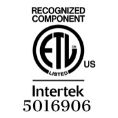This may be the first point in our lives that architecture and design has been fundamentally transformed by a pandemic; however, it is not the first time in human history. Los Angeles established a Housing Commission in 1906 to investigate the living conditions in slum courts by condemnation of unsanitary plumbing, New York’s infrastructure moved away from the infection-prone tenement housing during the 19th century, and London’s infrastructure was reforming after the 1954 Cholera Epidemic.
Continue ReadingFeatures and Benefits of Switchable Privacy Glass
Features and Benefits
The PDLC switchable privacy glass application can be used in many innovative ways. Here is a summary of some of the main features and benefits of using PDLC switchable privacy glass:
Continue ReadingLighting Conditions and Haze in Regular and PDLC Glass
As previously noted, one of the most common misconceptions relates to clarity of the PDLC technology because of customers’ preexisting expectation that the optical clarity will be the same as with regular float glass. That level of clarity is not possible with PDLC products, however, as they contain liquid crystal materials that optically manipulate light; therefore, glass products with PDLC technology naturally have some level of haziness to them (even regular glass has some haze, albeit at much more extreme lighting conditions). This haziness effect with PDLC glass products is magnified at larger viewing angles and with certain high-intensity lighting conditions. This, however, does not detract from its wide-ranging use as a practical alternative.
Continue ReadingPolyvision® + IGU
What is an IGU?
Insulated Glass Units are made up of two or more lites of glass with an airspace between them. The two lites are separated around the border of the glass by a spacer, which is then sealed together with the lites to create one unit. By having a laminated inboard, an insulated glass unit can also have the functionality and style of Polyvision® Switchable Privacy Glass.
Also known as Insulated Glass or IG units, insulated glass is most commonly used to control heat transfer. The air space in between the lites of glass helps keep heat out in the warmer months and heat in during the cooler months. When a low-e coating is combined with insulated glass, air-to-air heat transmissions are lowered even more.
Continue Reading



